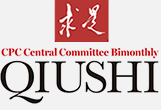The Formation and Establishment of China’s New Type of Political Party System
China’s new type of political party system did not emerge from thin air. Rather, it was conceived over the course of China’s democratic revolution (1840–1949) and took shape during the political consultations in preparation for the founding of the People’s Republic of China (PRC) in 1949. It represents a remarkable creative contribution by the Communist Party of China (CPC), one that is based on our Party’s review of the lessons of history both in China and around the world and its explorations to establish a distinctively Chinese political party system.
After the advent of modern times, China was gradually reduced to a semi-colonial, semi-feudal society. The country endured intense humiliation, the people were subjected to untold misery, and Chinese civilization was plunged into darkness. Generations of Chinese struggled tirelessly to save the nation, and myriad political forces successively emerged on the historical stage. In the early 20th century, the Revolution of 1911 finally brought an end to the autocratic monarchy that had ruled China for several millennia, establishing the first republican state in Asia. China followed the example of Western countries by adopting parliamentary politics and a multiparty system. At one time, over 300 political groups were active in the country. Yet, rather than bringing democracy to China, the multiparty system led to a proliferation of political parties, all competing for power. The result was a political merry-go-round.
Where the multiparty system failed, one-party dictatorship proved equally unworkable. After the Kuomintang under Chiang Kai-shek established a one-party dictatorship following the creation of the Nanjing National Government, it led to economic collapse, political isolation, and military defeat. This ultimately ended with the complete collapse of Kuomintang rule on the mainland.
For modern China to successfully avoid subjugation and resist the forces of imperialism and feudalism, it would need to forge a new path based on a new political system. This weighty historic mission fell upon the shoulders of the CPC.
On the day it was founded, the CPC made it its mission and aspiration to seek happiness for the Chinese people and rejuvenation for the Chinese nation. In the face of a grave national crisis caused by both domestic turmoil and foreign aggression, Chinese Communists saw that the strength of the working class alone would not be enough to ensure victory in the new-democratic revolution; rather, all progressive elements would need to be united to create a force powerful enough to secure complete victory.
As early as at its Second National Congress in 1922, the CPC initially put forward a united front policy based on the proposition of establishing a democratic united front. During the War of Resistance Against Japanese Aggression, it adopted the three-thirds system of democratic government in resistance base areas, in order to unite all forces for actively taking the fight against Japanese aggressors. This type of government, which was CPC-led and based on multiparty participation, was a forerunner to the subsequent system of CPC-led multiparty cooperation and political consultation.
Following victory in the War of Resistance in 1945, the KMT tried frantically to suppress the democratic movement. By forging close ties with these parties and sincerely welcoming their involvement in consultations on founding a new China, the CPC demonstrated a clear and resolute commitment to multiparty cooperation. The first plenary session of the Chinese People’s Political Consultative Conference (CPPCC) was convened in September 1949. Along with the CPC, various other political parties, people’s organizations, and democrats without party affiliation were in attendance. The Common Program of the CPPCC, which was adopted at the session, became the interim constitution for the PRC. This session heralded the establishment of a new type of political party system in China.
From this historical account, it is clear that China’s new type of political party system took shape as the CPC led the Chinese people on a journey to realize national independence, make our country strong and prosperous, and pursue a better life. It was also an inevitable result of the practice of people’s democracy.
Editor: Li Xiaoqiong
























